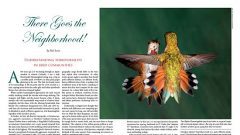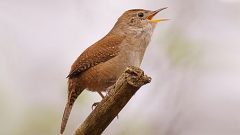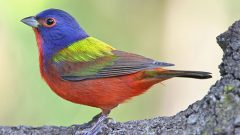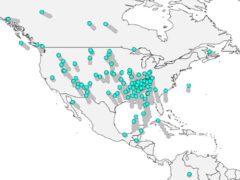The Four Keys to ID
- Size & Shape
The Marsh Wren is a small, plump, round-bodied wren with a short tail that it often holds up almost vertically above its back. It has a thin bill and short wings.
Relative Size
About the size of a House Wren, but smaller than a Song Sparrow.

 sparrow-sized or smaller
sparrow-sized or smallerMeasurements
- Both Sexes
- Length: 3.9-5.5 in (10-14 cm)
- Weight: 0.3-0.5 oz (9-14 g)
- Wingspan: 5.9 in (15 cm)
© Tony V / Macaulay Library
- Color Pattern
- Behavior
- Habitat
Regional Differences
Multiple subspecies of Marsh Wrens occur throughout their range, and their taxonomy has yet to be fully evaluated. In general, individuals in the eastern United States are rustier and more brightly colored than individuals in the western U.S. Birds in the West also have a larger repertoire of songs that are harsher and more complex than those in the East (see Sounds). A small disjunct resident population also occurs in Mexico in the states of Hidalgo, Mexico, and Puebla.


















